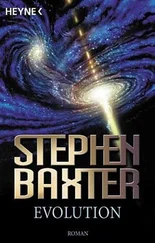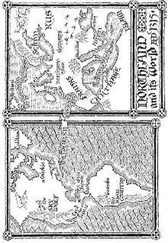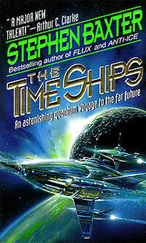Our modern chemical-engine rocket technology is clearly far too feeble to challenge the huge distances to the stars. How can we do better?
We’ve already looked at lightsails, interstellar sailing ships pushed by light itself. But what about rockets? All our spacecraft so far have been powered by rockets. Can we get to the stars that way?
Isaac Newton understood that to make any rocket work, you have to throw something out the back, the faster the better, and that applies whether you’re talking about a Chinese firecracker or Venture Star . (This is Newton’s Third Law of Motion.) The velocity increase you get per kilogram of fuel depends on the velocity of your exhaust products. The space shuttle’s oxygen-hydrogen fuel, which is the best possible chemical system, has an exhaust velocity of a weedy few kilometres a second.
We could do better with a starship we could probably build tomorrow, if we really had to. Perhaps mankind’s earliest practical dream of a starship came out of our worst nightmare: a ship driven by nuclear bombs, a whole stream of them, thrown behind a huge spring-loaded pusher plate and detonated. Project Orion was run from 1957 to 1965 by General Atomic, a division of a company that also built nuclear submarines and intercontinental ballistic missiles. It was a time of extravagant dreams inspired by the new technology of thermonuclear detonations, the energies of the sun brought down to Earth. Orion was like putting a firecracker under a tin can to fire it into the air: not pretty, but effective. One analysis predicted that it would be possible to have sent humans as far as Saturn by 1970. However, growing opposition to nuclear weapons through the 1960s caused the Orion concept to be viewed with suspicion. The final straw was an unwise presentation to President Kennedy of a model of a spaceborne Orion-technology battleship, bristling with nuclear missiles. Kennedy was disgusted, and the project was canned.
A more refined version of the Orion idea is a technology called nuclear pulse propulsion. This was used in a conceptual study called Project Daedalus by the British Interplanetary Society in the 1970s. The ship would be driven forward by a series of micro-explosions, pellets of deuterium and helium-3 blasted by lasers and blowing up behind a pusher plate. This kind of drive could throw out its exhaust at something like a thousand kilometres a second, maybe hundreds of times better than chemical technology.
The ultimate rocket exhaust speed, however, is the speed of light—the universe’s speed limit, around a hundred thousand times the shuttle’s exhaust velocity. With such an exhaust velocity you’d have the best rocket you can possibly build.
And this is what must have drawn the attention of RDA’s rocket engineers to antimatter.
Antimatter’s existence was predicted theoretically as long ago as 1928, by a young physicist called Paul Dirac. Dirac was seeking a way to unite Einstein’s special relativity with another theory: quantum mechanics, the theory of matter, energy and motion on very small scales—brand new in 1928, still brain-bending today, and happily we don’t need to look at it too closely in this book. Dirac found that his resulting theory contained a prediction that for every type of subatomic particle there must exist an anti-particle: that is, a particle with the “quantum numbers” that define it all having opposite signs. Thus to the negatively charged electron there is an “anti-electron,” also called a positron, with positive electric charge, and other less familiar properties similarly mirror-image reversed.
Rocket engineers, and other fans of big explosions, soon realised that this “antimatter” had the beguiling property that if a chunk of it came into contact with an equal-sized chunk of normal matter, both chunks would be annihilated completely, in a flash of radiation. This made it stupendously efficient as an energy source, with all the propellant mass turned to energy; even the nuclear fusion processes that power the sun and thermonuclear bombs only turn a few per cent of the fuel mass to energy. A single gram of antimatter could deliver more energy than is contained in a thousand space shuttle external tanks full of fuel.
And because the result of the annihilation is pure radiation, you could stick the stuff in a rocket and immediately get that ideal lightspeed exhaust.
The first conceptual antimatter rocket design was by a German engineer called Eugene Sanger (who, in the 1930s, had sketched a rocket bomber-plane that could have struck New York; happily it was never built). In the 1950s Sanger produced a rocket design based on the annihilation of positrons with electrons; the gamma-radiation “exhaust” would fly out at lightspeed. The problem, however, was directing that exhaust. The gamma-ray photons fly out of annihilation events in all directions. If they were charged particles you could use a magnetic field to point them in the right direction—namely, out the back of the rocket. But as photons have no electrical charge there was no way of controlling them.
In the 1980s Robert L. Forward, of lightsail fame, came up with a workable design based on protons, massive fundamental particles. These annihilate with their antimatter twins, antiprotons, in two stages. First they produce particles called pions, some of which are charged. The pions soon decay to gamma rays—but not before you can use a magnetic field to hurl these charged particles out the back of your rocket as your exhaust. So this is a “pion” rocket rather than a true “photon” rocket, but it’s the closest anybody has come so far to the ideal.
Venture Star ’s engine is an advancement on these lines, depending on a hybrid system, using a deuterium fusion process along with the antimatter annihilation.
When dealing with antimatter there are always practical problems of containment. You have to keep your antimatter from any contact with matter, even the walls of any fuel tank, if you want to live through the trip. The only way we know to do this is with magnetic fields, perhaps with the antimatter in the form of plasma, a charged gas. The most famous fictional use of antimatter as a fuel has probably been in Star Trek , in which it provides the energy for the faster-than-light warp field. The antimatter is contained in “pods”; starships are regularly wrecked when the containment fails. In the modern world the “Penning traps” used for such purposes, to contain the tiny amounts of antimatter produced in particle accelerators, are minuscule by comparison to what you’d need for Venture Star . And they’re short-lived. The longest anybody has trapped a handful of antihydrogen atoms so far is a mere thousand seconds, about sixteen minutes.
Aboard Venture Star , this problem has been solved by using Pandoran unobtanium, a room-temperature superconductor, to generate the intense magnetic fields necessary for successful containment (see Chapter 15).
More fundamental than containment, however, is the problem of where the antimatter is going to come from in the first place.
How much antimatter would Venture Star need?
Robert Forward came up with some numbers for his piondrive propulsion system. He figured that to get a small unmanned one-tonne probe to Alpha Centauri at a tenth lightspeed would require around a third of a tonne of antimatter. Venture Star is a lot bigger than that, and goes a lot faster, and, as you can imagine, the fuel load thereby increases; probably the antimatter required is going to be the same order of size as the mass of the ship itself—hundreds of tonnes, perhaps, or thousands. That’s why those spherical fuel pods in Venture Star ’s engine stack are so large. Where is RDA going to find that much antimatter?
Читать дальше










